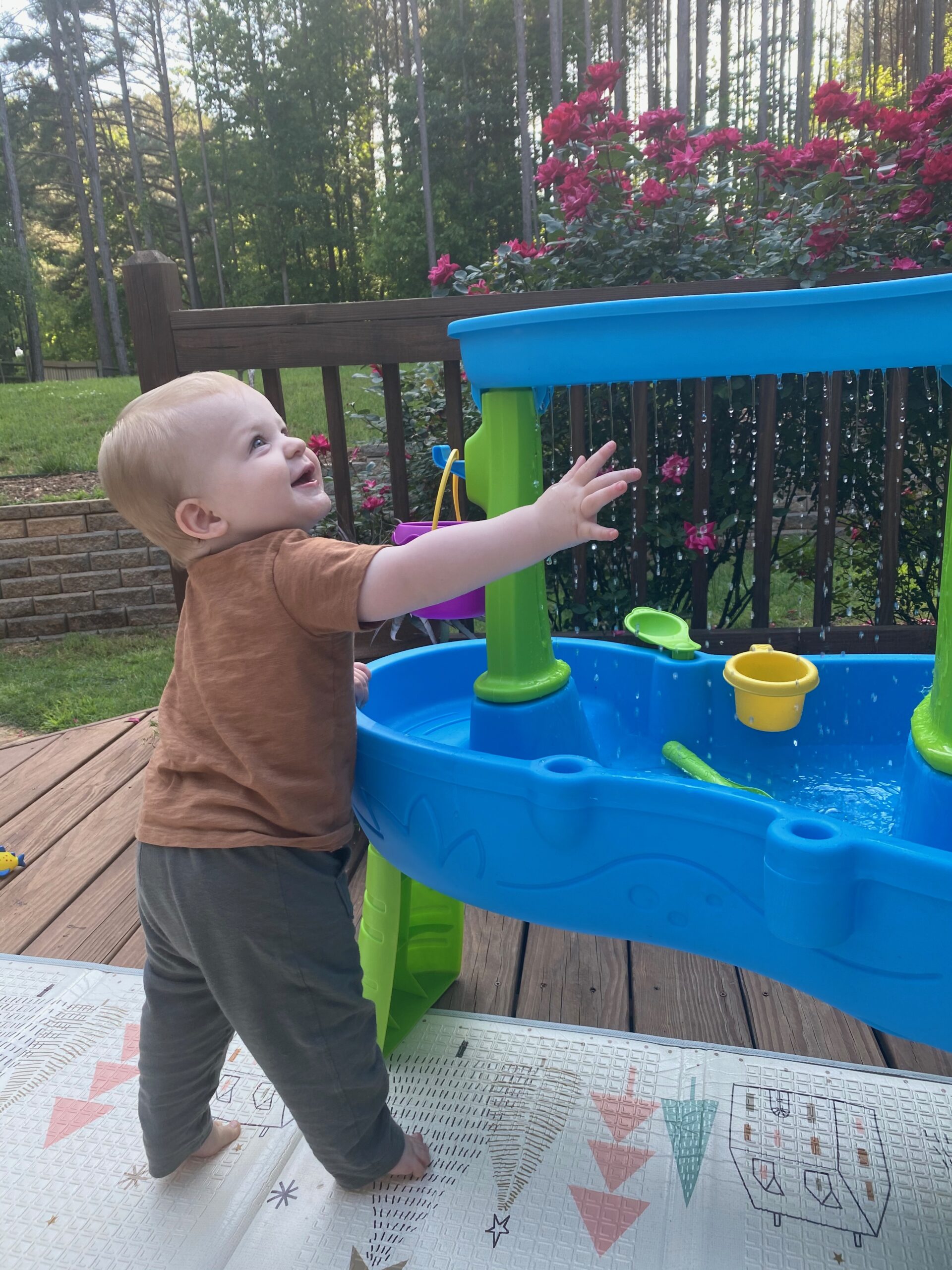Do you have an infant at home? Are you looking for fun, outside activities this summer?
Water play is a great way for infants to work on developing their cognitive and motor skills, imagination, and attention to tasks. In the following article, Occupational Therapist and Infant Development Specialist, Dr. Sarah Johnson describes how different elements of water play can be engaging and helpful for developing fine and gross motor skills. She also provides a few products and at-home DIY projects for both younger and older infants, and even offers tips to make the water more visually engaging!
Before you break out the water mats and toys, make sure you are supervising your infant during the entire water play session. Infants from about two to four months are just starting to lift up their heads and push themselves up, so it’s important to engage with them and make sure they are playing safely!

Benefits
- Tummy time water play develops gross motor skills
- Core strength, head control, and reaching
- Development of fine motor skills
- Scooping and squeezing
- Development of cognitive skills
- Cause & effect, motivation, imagination, and attention to tasks
- Development of visual skills
- Tracking and depth perception
Mess-Free Water Play
You can purchase colorful water mats that keep the water contained, and provide your infant with a soft surface to lay on and engaging shapes.
This is our favorite option on Amazon!
Emerge Pediatric Therapy is an Amazon Affiliate and may earn a small percentage on qualifying purchases.
An alternative, DIY option is to fill a gallon-sized Ziploc bag with water, squeeze the excess air out, and double-bag it to prevent leaks. For infants from about 2-4 months, you may want to tape the mat to the floor to prevent it from moving or opening, but this homemade water mat is also fun for older infants too!
Water Play for Older Infants
Infants with more control of their gross motor skills may enjoy a little bit of a messier water play experience. Lay some towels on the floor or go outside and fill a container with water and toys. You can use a baking pan to limit the water depth or a storage bin for a more submersive experience. You can add food dye or glitter to make the water even more visually engaging, and add some fun toys! Slippery, floating objects can be very motivating to work on fine motor skills, as well as using tools like spoons or colanders to scoop water.
If your infant needs further support with tummy time or if you have questions about their development and milestones, contact us today! For more information about infant development or to speak to a member of our infant development team, fill out an initial inquiry form and call us today!
Fill out our developmental checklist to see where your infant is developmentally!

0 Comments